Outdoor Fun and Hot Springs near Tokyo! Gunma: Top 30 Things to Do

Gunma, easily accessible from Tokyo, boasts famous hot spring resorts, nature, and historical sites. Read on to learn the best things to do and places to visit in Gunma, from Kusatsu Onsen to the outdoor heaven of Minakami, alongside food, hotels, and access from Tokyo.
Gunma: An Outdoor and Hot Spring Destination near Tokyo
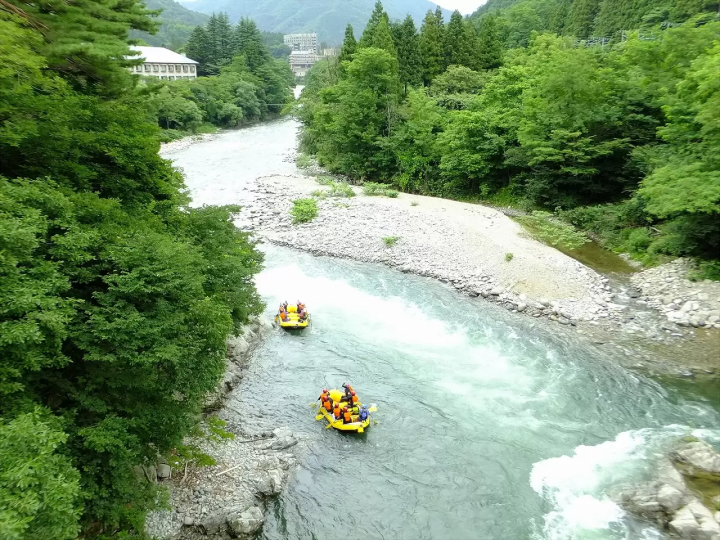
Rafting in Minakami. Photo by Pixta
Gunma Prefecture is a popular destination near Tokyo for those who love hot springs and spending time in the great outdoors. Gunma's nature-rich locations are ideal for hiking, whitewater rafting, canoeing, skiing in winter, and other outdoor activities.
Read on to learn about the best things to enjoy in Gunma, from hot springs and outdoor fun to food, accessibility, hotels, and more!
Top 30 Things to Do in Gunma
1. Kusatsu Onsen
2. Shima Onsen
3. Ikaho Onsen
4. Minakami Onsen
Outdoor Activities in Gunma
5. Rafting on Tone River in Minakami
6. Canoeing on Lake Okushima
7. Hiking at the Foot of Mt. Tanigawa
8. Trekking in Oze National Park
Scenic Destinations in Gunma
9. Mount Haruna
10. Mount Akagi
11. Mount Myogi
12. Fukiware Falls
13. Agatsuma Gorge
Gunma’s World Heritage Sites
14. Tomioka Silk Mill
15. Silk Industry Facilities
Other Amazing Places in Gunma
16. Shorinzan Darumaji Temple: Meet Thousands of Daruma Dolls
17. Tanigawadake Ropeway: View the Fall Foliage from Above!
18. Roadside Station Kawaba Den-en Plaza: Leisurely Fun and Excellent Food
19. Byakue Dai-Kannon Statue in Takasaki
20. Ride the SL Gunma (Minakami/Yokokawa)
21. Usui 3rd Bridge (Meganebashi Bridge)
Gunma Food and Cuisine
22. Joshu Wagyu Beef
23. Onsen Manju Dumplings at Kusatsu Onsen
24. Croquettes at Okaju Meat Shop in Tomioka
25. Udon Noodles at Hayami in Tomioka
26. Soba Noodles at Kawaba Den-en Plaza
Hotels and Ryokan Inns in Gunma
27. Maebashi: Shiroiya Hotel
28. Kusatsu Onsen: Kusatsu Hotel
29. Minakami: Takaragawa Onsen Osenkaku
30. Tomioka: Myogi Green Hotel & Terrace
Acessing Kusatsu Onsen, Tomioka, Takasaki, and Other Destinations in Gunma
Gunma Hot Spring Spots
Most people probably think of hot springs when it comes to Gunma, don’t they? First, we’ll introduce the top four famous hot spring resorts!
1. Kusatsu Onsen
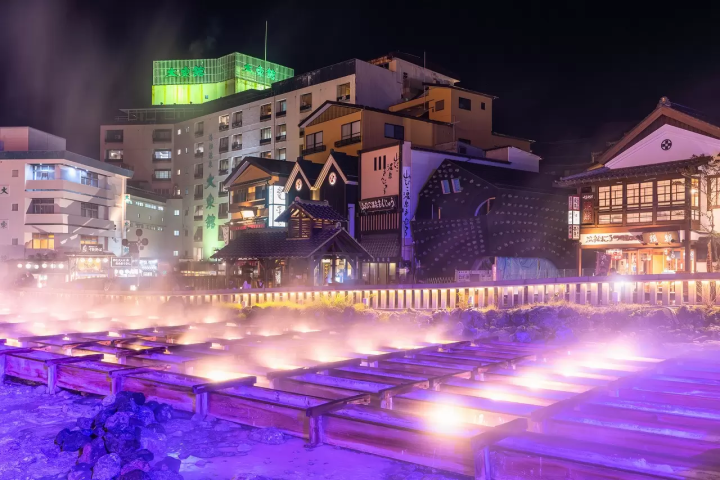
Photo by Pixta
Kusatsu Onsen has maintained its number-one status on Japan’s Top 100 Hot Springs ranking for 15 consecutive years. It has the most water volume in Japan as a naturally heated spring.
The hot water field called yubatake located in the heart of Kusatsu Onsen is where 4,000 liters of hot spring water gush out every minute. The yubatake is illuminated at night offering surreal views so do drop by during your evening stroll.
The best way to enjoy your time in Kusatsu is by staying overnight at a local hotel or ryokan inn; you'll be able to leisurely soak in a hot spring bath and taste delicious local cuisine.
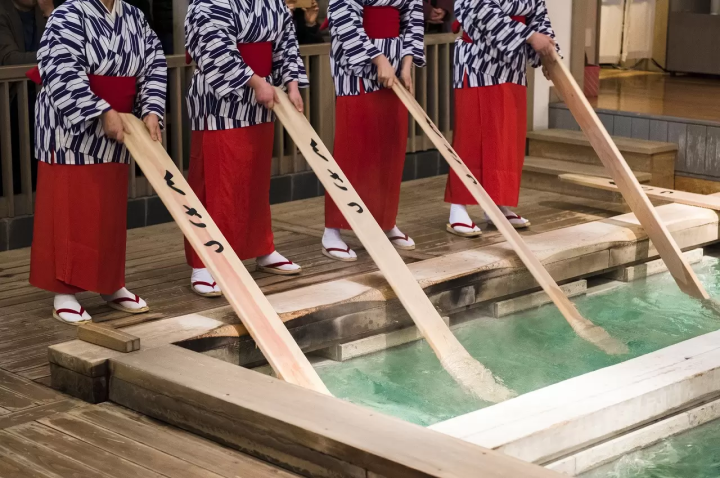
Photo by Pixta
Another highlight of Kusatsu Onsen is the traditional performance called yumomi, which can be enjoyed at Netsunoyu, a historical hot spring facility. Yumomi is performed to lower the temperature of the hot spring water naturally without the use of electricity. Yumomi performances are held six times a day and the admission fee is 600 yen.
2. Shima Onsen
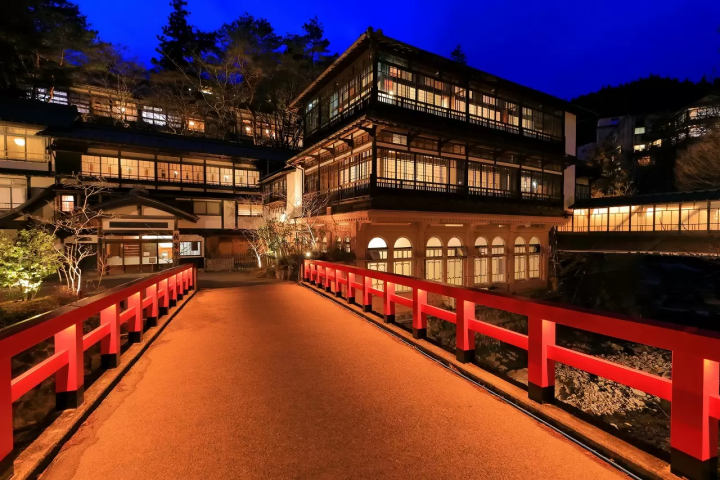
Sekizenkan. Photo by Pixta
Shima Onsen is known for its bright blue Lake Okushima, magnificent nature, and historic hot springs. This charming town area makes a great day trip from Tokyo for those who wish to spend time outdoors.
This is also where you'll find Sekizenkan, a historic hot spring facility that looks like something from a Studio Ghibli animation movie.
We suggest enjoying a leisurely walk through the town of Shima Onsen and its nature-rich surroundings, relaxing at the hot springs, cycling up to Lake Okushima to enjoy the view, and indulging in some of the local treats such as dumplings made with sweetened azuki beans or the blue sodas inspired by the lake!
↑ Return to the top of article.
3. Ikaho Onsen

Ikaho Onsen, a hot spring resort equally popular as Kusatsu Onsen, is famous for the beautiful stone staircases woven into its landscape. Climb to the top and you'll reach an ancient shrine that has been at the heart of this town for centuries.
There are several souvenir shops located near these 365 stone steps, with the general atmosphere of the resort resembling ancient Japan. We recommend this resort to those interested in leisurely enjoying the hot springs while experiencing the retro ambiance.
4. Minakami Onsen
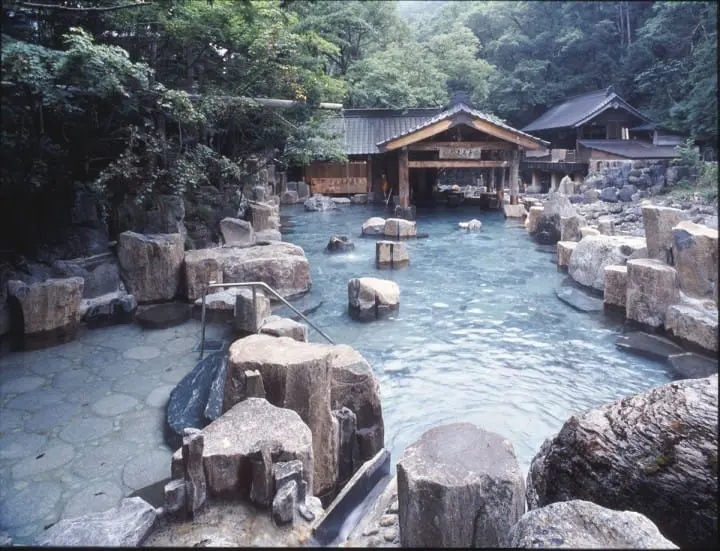
Photo courtesy of Minakami Tourism Association
Minakami Onsen is a hot spring village in Minakami located in northern Gunma.
Outdoor activities that make the best of the area’s vast nature have been a huge hit in recent years. Adults and children can have fun moving their bodies with activities like whitewater rafting and canoeing in Tone River near the hot spring village. Alternatively, you can ski and snowboard at any of the nine ski resorts in town.
↑ Return to the top of article.
Outdoor Activities in Gunma
5. Rafting on Tone River in Minakami
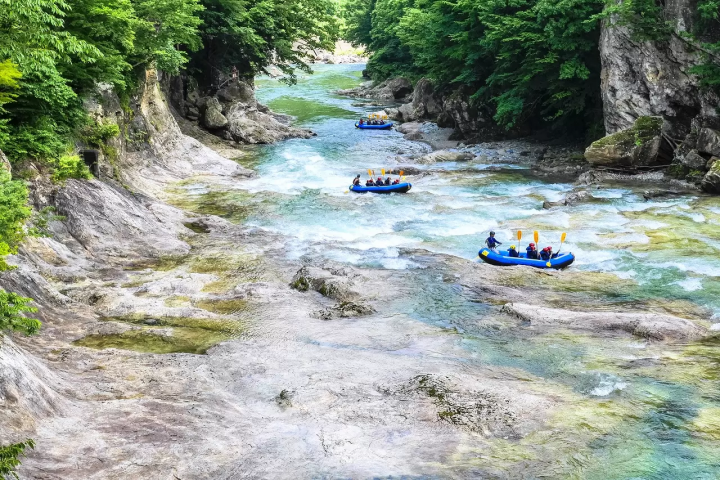
Photo by Pixta
Minakami is an excellent destination for outdoor activities such as hiking, rafting, canyoning, and canoeing, as well as snow sports in the winter.
Canyons Japan has been providing outdoor adventure activities in this area since 2000. One of their most popular activities is Tone River rafting, an adventure that allows you to enjoy the breathtaking beauty of this region from a different perspective.
6. Canoeing on Lake Okushima or Lake Naramata

A mountainous region, Gunma is home to several beautiful lakes: the dazzling blue Lake Okushima in Shima Onsen, the mirror-like Lake Naramata and Lake Dogen near Minakami, Lake Haruna, and others.
Canoeing is one of the activities that shouldn't be missed! Lakewalk (Japanese), an outdoor activity company based in Minakami provides canoeing and kayaking workshops for participants of all ages.
↑ Return to the top of article.
7. Hiking on Mt. Tanigawa
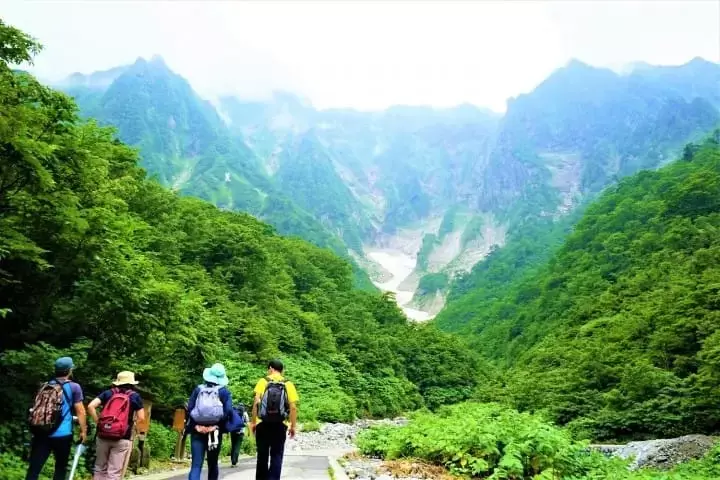
Mt. Tanigawa is the source of Tone River, which provides water for the entire Tokyo area. The beech forest covering its valleys are home to an ecosystem inhabited by many rare and protected species.
The mountain peak is a famous destination for experienced rock climbers but we recommend the Ichinokurasawa Eco Hiking tour (Japanese), designed for hikers of any level and all ages. Ichinokurasawa is a valley on the eastern side of Mt. Tanigawa. Your guide will offer details on what makes the local ecosystem unique.
8. Trekking in Oze National Park
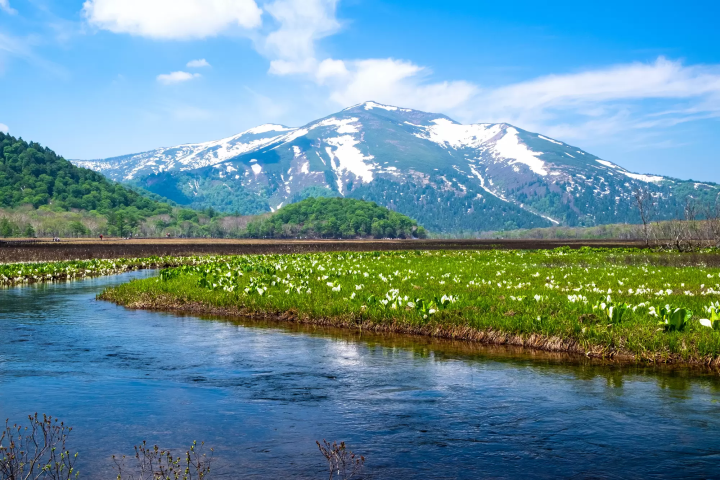
Photo by Pixta
Oze National Park straddles four prefectures: Gunma, Fukushima, Niigata, and Tochigi. Famous for the lovely white mizubasho flowers (Asian skunk cabbage) that grace its marshes from late May until mid-June, this park is an excellent destination for those who love trekking and exploring the great outdoors.
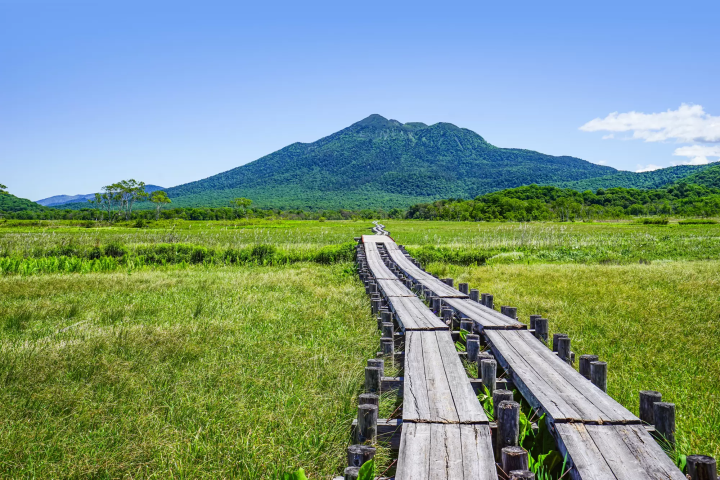
Photo by Pixta
The 3.3 km trail from Hatomachi-toge Pass to the picturesque Ozegahara Marsh is a medium difficulty trek that can be enjoyed by visitors of all ages. The trail runs through a primeval beech forest that displays an amazing palette of hues ranging from yellow-green to orange and red in early autumn (September - October).
↑ Return to the top of article.
Scenic Destinations in Gunma
There are many more highlights to see in Gunma Prefecture besides hot springs and World Heritage sites!
9. Mount Haruna
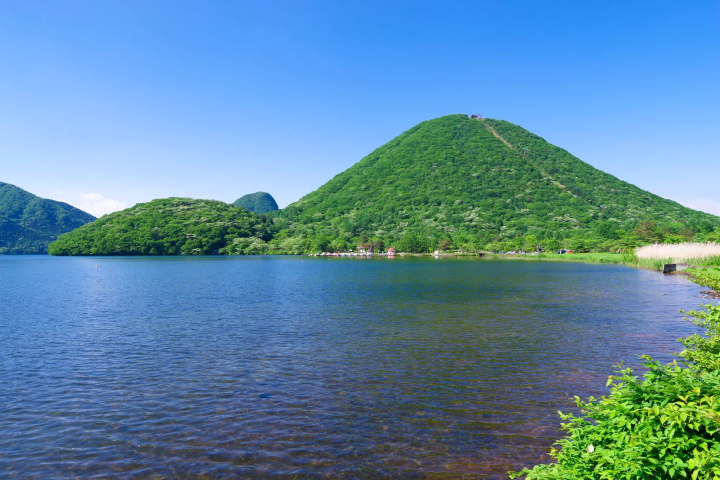
Picture courtesy of Pixta
Mount Haruna is a popular hiking and outdoor spot in Gunma known as one of the Jomo Sanzan, Three Mountains of Gunma, alongside Mount Akagi and Mount Myogi. The mountain is near Ikaho Onsen, so we recommend enjoying both the hot springs and hiking together.
Initial D, a popular anime that depicts young characters racing on mountain roads with their cars at high speeds, features a fictional mountain called Mount Akina. This mountain is theorized to have been named after Mount Haruna.
10. Mount Akagi
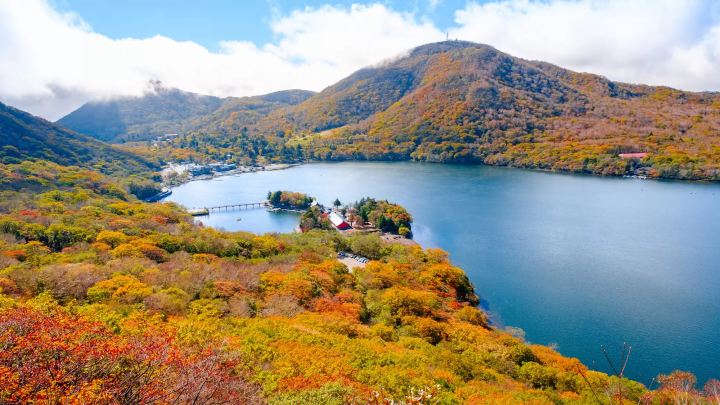
Picture courtesy of Pixta
Mount Akagi, one of the Jomo Sanzan, sits at 1,827 meters in altitude and is also one of the 100 Famous Mountains of Japan. Mount Akagi has been regarded as sacred and an object of worship for hundreds of years. Akagi Shrine, which enshrines the mountain as its deity, has 300 shrines located across the Kanto region.
↑ Return to the top of article.
11. Mount Myogi

There are numerous spots where you can enjoy the marvelous nature in Tomioka, home to the Tomioka Silk Mill World Heritage site. Mount Myogi is one of those spots.
It is thanks to the mountain’s wondrous landscapes shaped by products of volcanic eruption that it was chosen as one of Japan’s Three Rare Scenic Beauties as well as one of 100 Landscapes of Japan. Myogi Shrine, located halfway up the mountain, enshrines the mountain as its deity.
12. Fukiware Falls
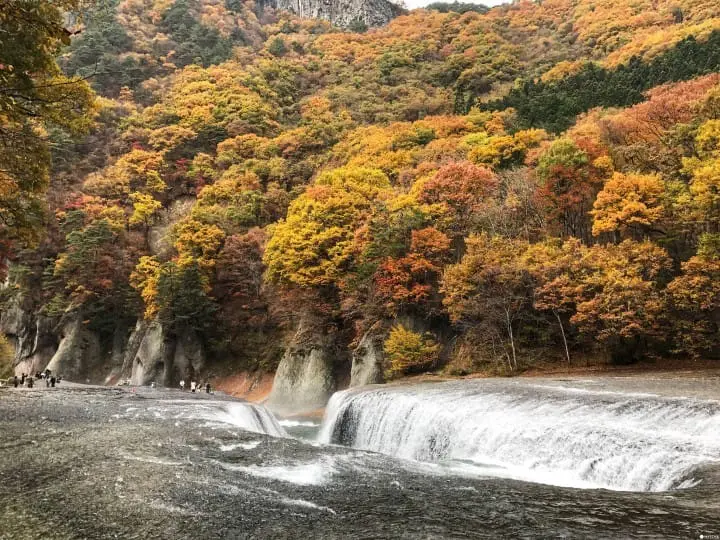
Fukiware Falls, located in Numata, was given this name because of the way it seems like the water is flowing out from where gigantic rocks are being smashed to pieces.
The falls are seven meters in height and 30 meters in width. It is known as the Niagara Falls of the East due to being such a tremendously impactful sight.
13. Agatsuma Gorge
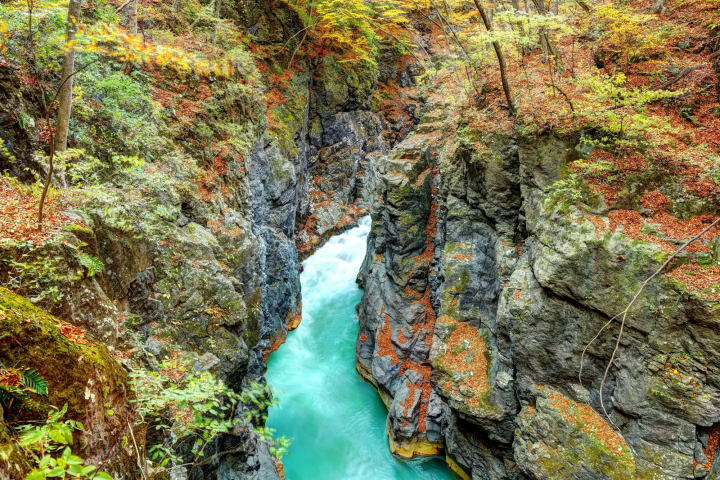
Picture courtesy of Pixta
Agatsuma Gorge, found in Higashiagatsuma in western Gunma, is a ravine thought to have been formed long ago from gushing lava eroded by the river. The fresh spring verdure and the autumn foliage seasons are when the gorge is especially beautiful, leading to it being included as a place of scenic beauty in Japan.
↑ Return to the top of article.
Gunma’s World Heritage Sites
Gunma Prefecture is home to the Tomioka Silk Mill and Related Sites, a property consisting of World Heritage sites.
14. Tomioka Silk Mill
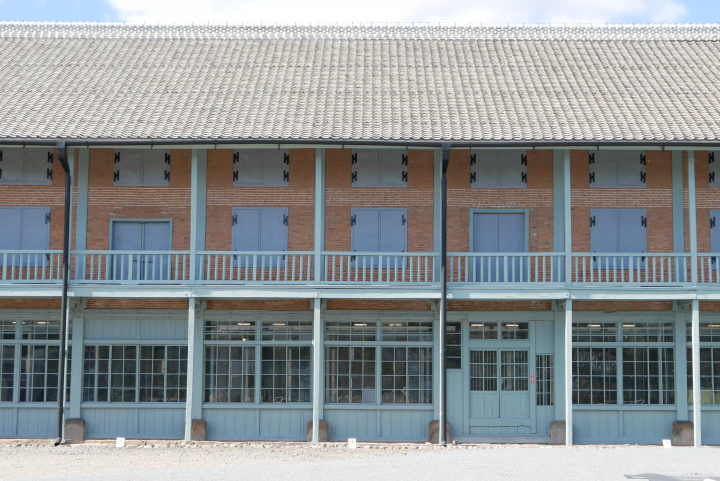
Photo by Pixta
The Tomioka Silk Mill was the first silk reeling mill fully fitted with machinery in Japan and continued to manufacture high-quality silk threads from the Meiji period until 1987. The machinery and building is preserved almost exactly as it was during that time.
The silk mill is located a kilometer away from the Joshin Railway Joshu-Tomioka Station and within walking distance. The main street on this route carries a retro atmosphere and is also fun just to stroll around.
Read also
15. Silk Industry Facilities
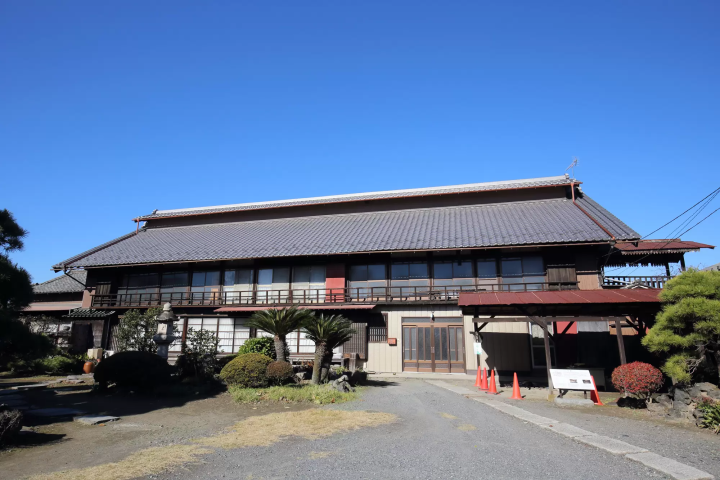
Photo by Pixta
The silk industry that started flourishing in Japan in the late 19th century played a key role in the country's efforts toward modernization. Besides the Tomioka Silk Mill, various other silk industry facilities have been designated World Heritage sites and can be visited today.
The Tajima Yahei Sericulture Farm, located in Isesaki, is a home and silk farmhouse constructed by Yahei Tajima, a famous silk farmer, in 1863.
Yahei Tajima researched methods in silk farming to process raw silk thread here in the farmhouse and contributed immensely to the development of the industry in Japan. Visitors cannot enter the farm as people still do reside in this home, but they are permitted to tour the garden.
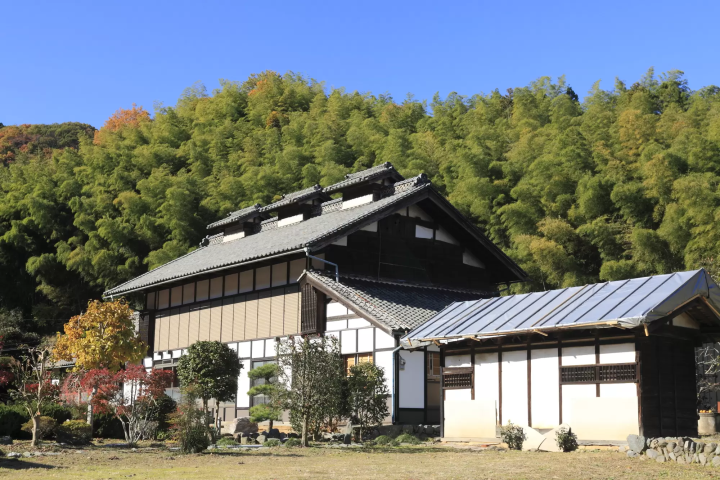
Photo by Pixta
The Takayama-sha Sericulture School, located in Fujioka, was a school established by silk farmer Chogoro Takayama to conduct sericulture research and teach the next generation of sericulturists. It later became the first educational institute for sericulture technology and had a major influence on the history of the silkworm industry in Japan.
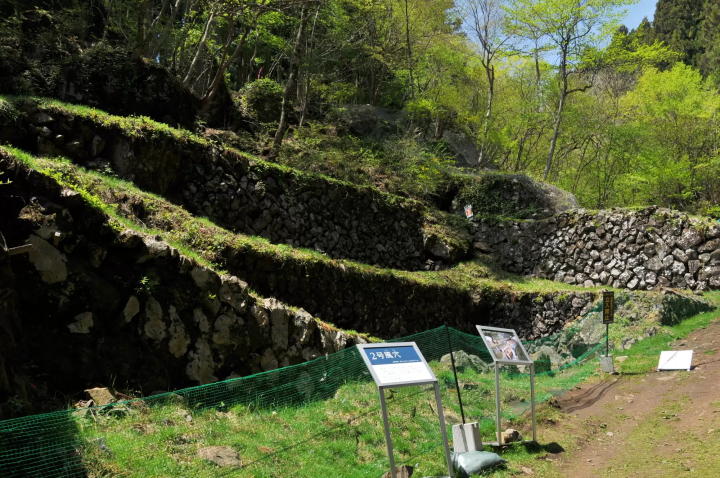
Photo by Pixta
It was necessary to make advancements in sericulture in Japan during the early Meiji period due to silk thread being a major export product. The Arafune Cold Storage made it possible to breed silkworms multiple times a year by using the cold winds captured in the gaps between boulders for cold storage of the silkworms. This laid the foundation for the growth of Japan’s silk industry.
↑ Return to the top of article.
Other Amazing Places in Gunma
16. Shorinzan Darumaji Temple: Meet Thousands of Daruma Dolls

Shorinzan Darumaji Temple is said to be the origin of the lucky daruma, a doll that contains wishes for peace and prosperity in the household and a prosperous business. It is accessible in 25 minutes on foot or five minutes by taxi from Gunma-Yawata Station. It is also accessible by bus from Takasaki Station.
Shorinzan Darumaji Temple was constructed in 1697 by a Maebashi feudal lord to protect Maebashi Castle’s urakimon (the direction in which demons leave). It also became the eternal place of prayer for the Mito Tokugawa family, one of the families of the Edo shogunate, in 1726. As such, it has a very long history.
17. Tanigawadake Ropeway: View the Fall Foliage from Above!
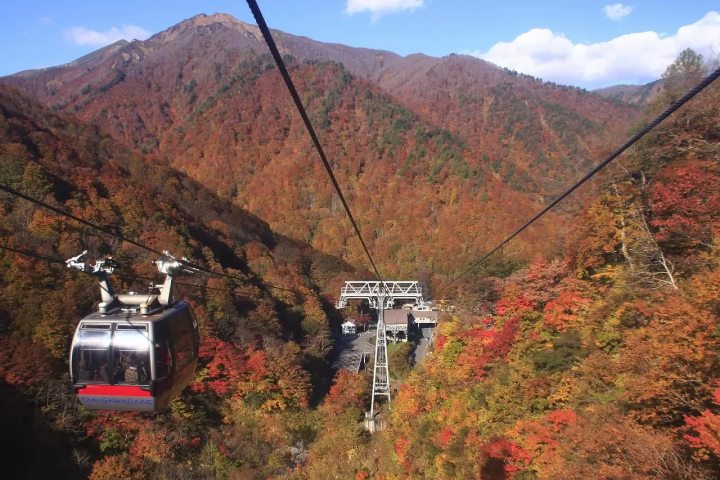
Photo by Pixta
The Tanigawadake Ropeway in Minakami operates throughout the year, serving hikers in the green season and snow sports enthusiasts in winter.
One of the best times to visit on a day trip is in autumn (late October) to enjoy the magnificent fall foliage from above! Tanigawa Ropeway Station is easy to access from Tokyo by train and bus.
↑ Return to the top of article.
18. Roadside Station Kawaba Den-en Plaza: Leisurely Fun and Excellent Food

Photo by Pixta
Kawaba Den-en Plaza is a tourist and leisure facility located in the tranquil Kawaba village at the foot of Mt. Hotaka. It includes several dining and shopping facilities, playgrounds, studios for pottery workshops and other activities, and even a hotel!
The Farmers' Market is the best place to find souvenirs from Gunma such as fresh fruit and vegetables, jams and sweet snacks made with locally grown fruit, dairy products made at Kawaba Denen Plaza, beverages, pickles, and many other delicious food items.
19. Byakue Dai-Kannon Statue in Takasaki
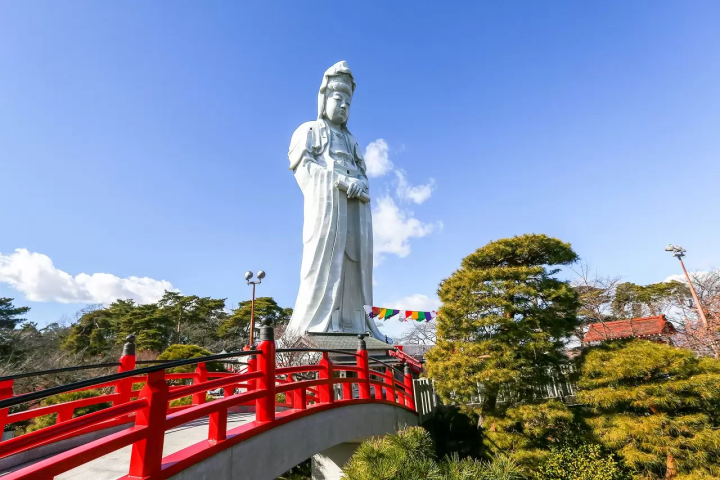
Photo by Pixta
The Byakue Dai-Kannon in Takasaki is a 41.8-meter statue of Kannon Bodhisattva, the Buddhist Goddess of Mercy. The statue is located in the precincts of Jigenin Temple.
You can actually climb up inside the statues and enjoy the views from above! There are windows on each floor of the Dai-Kannon offering views of Takasaki and the great mountains surrounding it.
↑ Return to the top of article.
20. Ride the SL Gunma

The opportunity to be able to ride a steam locomotive (SL), where passengers can leisurely enjoy the view during their journey, is very rare in this day and age. However, Minakami and Yokokawa are two unique steam locomotives currently operating in Gunma Prefecture. Both steam locomotives depart from Takasaki Station and respectively stop at Minakami Station and Yokokawa Station for its final stop.
Operation dates are limited, so don’t forget to make reservations if you want to ride a locomotive. The JR TOKYO Wide Pass for international visitors can also be used on this service.
*Refer to this website for SL Gunma operation dates: https://www.jreast.co.jp/multi/en/joyful/slgunma.html
21. Usui 3rd Bridge (Meganebashi Bridge)

Photo by Pixta
Usui 3rd Bridge in Annaka is a beautiful, red brick arch bridge that can be said to be the quintessence of art and technology. It is an important historical structure in Japan that was constructed in 1892 and is commonly known as Meganebashi Bridge due to its resemblance to a pair of spectacles, "megane" in Japanese.
↑ Return to the top of article.
Gunma Food and Cuisine
22. Joshu Wagyu Beef
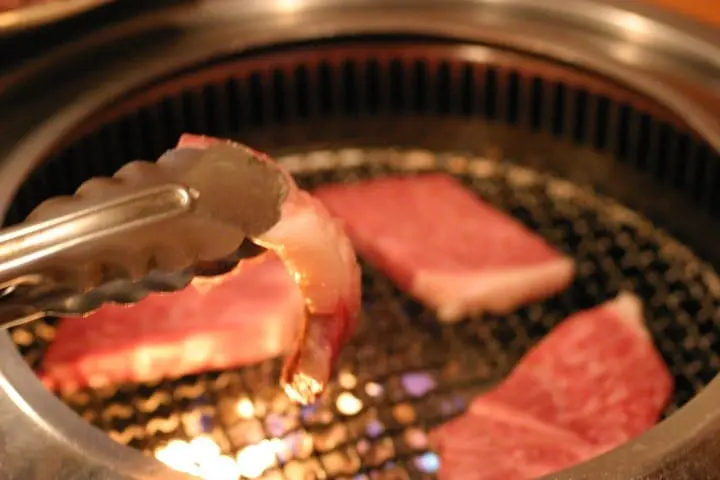
Picture courtesy of Gunma Official Tourist Guide
There are several foods and cuisines to try in Gunma, but we highly recommend Joshu wagyu beef. The cattle are raised in Gunma’s rich nature and the beef from these cattle is characterized by having very tender meat.
Shitatsuzumi, a yakiniku (grilled meat) restaurant directly managed by a wholesale butcher shop, is where you can enjoy a feast at reasonable prices.
23. Onsen Manju Dumplings at Kusatsu Onsen
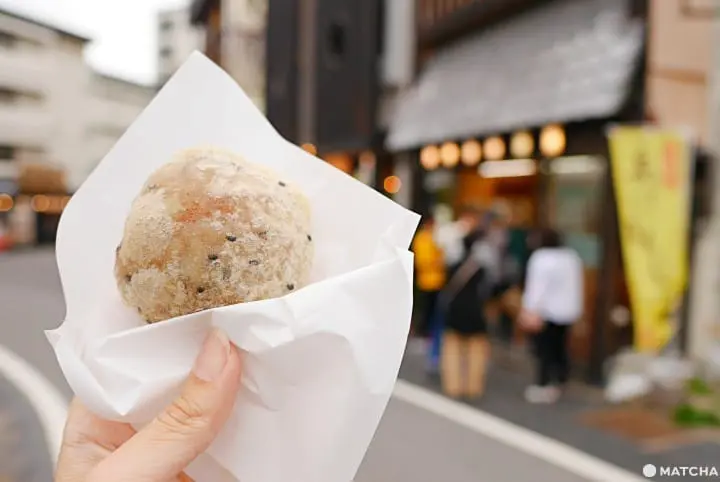
Onsen manju (steamed buns with azuki bean paste) is something you’ll definitely want to try when visiting a hot spring town.
There are many options for onsen manju in Gunma, but there are a few popular picks. Matsumura Manju, established in 1945, and Yamabiko Onsen Manju, offering a fried variety of onsen manju called agemanju, are some of the shops on this list.
↑ Return to the top of article.
24. Croquettes at Okaju Meat Shop in Tomioka

Okaju Meat Shop, located near the Tomioka Silk Mill, sells croquettes that were popular among female factory workers for decades. They also sell soft and fluffy mashed potatoes.
If you’re in Tomioka, we recommend trying these nostalgic flavors.
25. Udon Noodles at Hayami in Tomioka

Okkirikomi udon noodles 950 yen (with tax)
Hayami, a local soba and udon shop next to Tomioka Silk Mill, is a famous restaurant that has been interviewed and featured by numerous media outlets.
An especially popular dish is the Okkirikomi Udon. This dish is made by cooking noodles and 14 other ingredients in a soy sauce soup stock.
↑ Return to the top of article.
26. Soba Noodles at Kawaba Den-en Plaza

Soba (buckwheat) noodles are another specialty of Gunma. The soba restaurant Kokuzo, located within Kawaba Den-en Plaza, offers some of the best soba noodles in the region.
We recommend their Irodori Soba Gozen set, a collection of local flavors, including Joshu beef, smoked duck, and mushrooms. The set consists of delicious homemade soba noodles, six small side dishes, and even a small portion of the famous Yuki Hotaka rice grown locally.
↑ Return to the top of article.
Hotels and Ryokan Inns in Gunma
There are many stylish, chic hot spring ryokan (traditional Japanese inns) and hotels in Gunma. Next, we’ll introduce our four recommendations!
27. Maebashi: Shiroiya Hotel
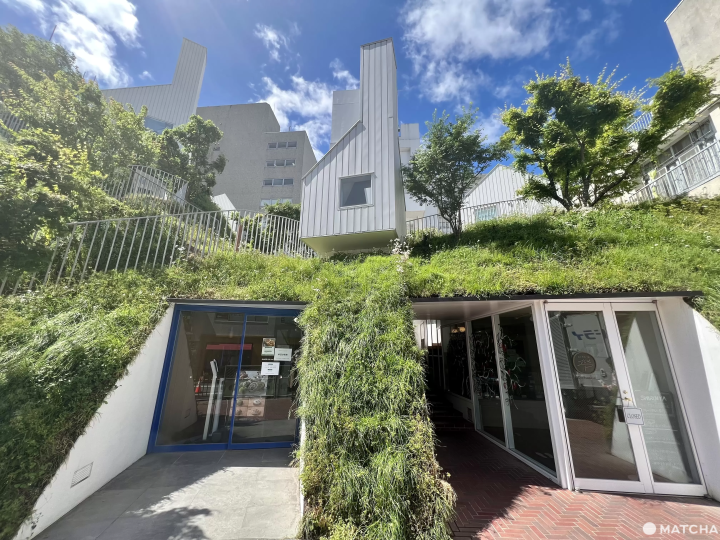
Shiroiya Hotel is a ryokan with a long history in Maebashi but was previously closed once in 2008.
However, the inn was reopened in 2020 by the hand of Mr. Hitoshi Tanaka, a Maebashi native and CEO of the eyewear manufacturer JINS. The inn was revived as a hotel where you can experience the fine arts first-hand in cooperation with four artists.
Book Shiroiya Hotel on Booking.com
28. Kusatsu Hotel

Picture courtesy of Kusatsu Hotel
Kusatsu Hotel was established during the Taisho period as a Western-style hotel. However, the hotel was transformed into a traditionally Japanese-style ryokan around 1952. There are seven wellsprings in total at Kusatsu Onsen; Kusatsu Hotel is one of only six buildings in the area where you can enjoy waters from the Sainokawara wellspring.
There are wonderful open-air baths and private baths offered by the hotel. You can also try dishes made with seasonal ingredients that are easy on the body.
Book Kusatsu Hotel on Booking.com
↑ Return to the top of article.
29. Takaragawa Onsen Osenkaku
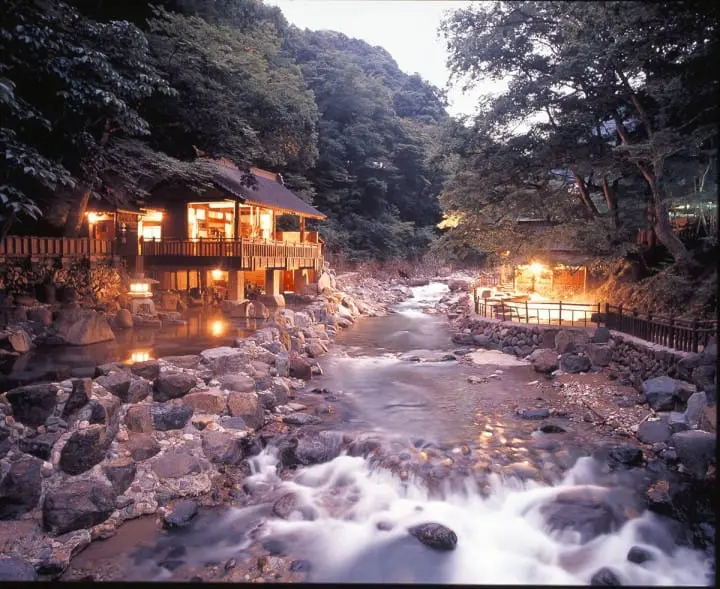
Picture courtesy of Minakami Tourism Association
Takaragawa Onsen Osenkaku was the filming location for Thermae Romae 2, a Japanese film starring Abe Hiroshi and Aya Ueto. Now, many international visitors also stay at this hotel.
Maka no Yu is a large, mixed gender open-air bath that was built along the mountain stream and one of many offerings here. Step into an extensive 200 square meter bath while under the beautiful scenery as the river flows nearby and you’ll truly feel how expansive it is.
Book Takaragawa Onsen Osenkaku on Booking.com
30. Myogi Green Hotel & Terrace

Myogi Green Hotel & Terrace is a popular spot that has acquired many repeat customers since its opening in 2018. The reason for its popularity? It’s the fact that you can see the incredible view of Mount Myogi before your eyes and experience the luxury of doing nothing.
The guest rooms are dome tents made to be stylish and comfortable. You can enjoy both fine dining made with local ingredients and a natural hot spring in the same facility, making this the perfect place to relax and forget about the worries of everyday life.
Book Myogi Green Hotel on Booking.com
↑ Return to the top of article.
Acessing Various Destinations in Gunma
What transportation method you use when visiting Gunma will vary depending on which area you plan to travel to.
Take the JR or Shinkansen to Takasaki and Maebashi
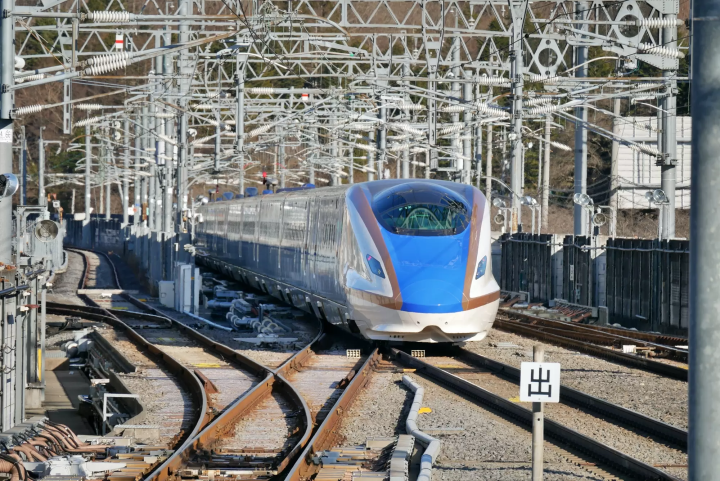
Picture courtesy of Pixta
Gunma’s prefectural capital is Maebashi, but the Shinkansen (bullet train) station is located in Takasaki. Takasaki Station—serviced by the JR Zairai Line, Joetsu Shinkansen, and Hokuriku Shinkansen— is the transportation hub to various areas in Gunma Prefecture.
Make sure to transfer lines at Takasaki Station if you plan to head to either Maebashi or Tomioka. Overseas visitors planning to take the Shinkansen are recommended to utilize the JR TOKYO Wide Pass.
Take the JR Limited Express Kusatsu-Shima or Bus to Kusatsu Onsen
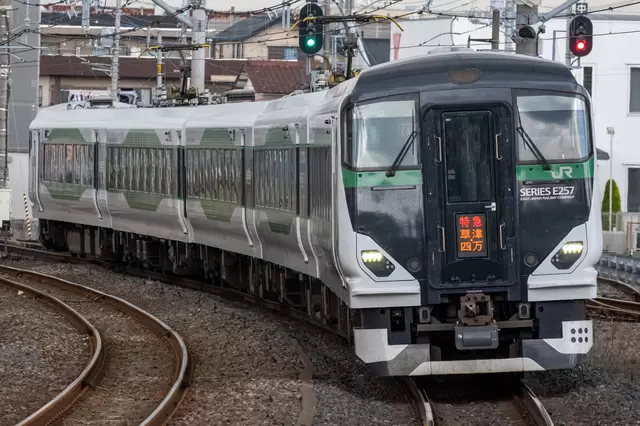
Picture courtesy of Pixta
Take the limited express Kusatsu-Shima from Ueno Station and alight at Naganohara-Kusatsuguchi Station. You can then travel to Kusatsu Onsen by transferring to a JR bus. Required travel time is three hours, while travel expenses will total around 6,000 yen for both the limited express and bus.
It’s also possible to take the Shinkansen via Takasaki Station, but the limited express will be faster from a connection perspective. If you’re an international visitor, the JR TOKYO Wide Pass can be used to take the limited express. We highly recommend this travel pass!
There are direct buses that depart from the Shinjuku Expressway Bus Terminal and Tokyo Yaesu Bus Terminal for Kusatsu Onsen. The total travel time is four hours. Please use this route if it seems like a hassle to make transfers.
Take the Tobu Railway to Isesaki, Tatebayashi, and Kiryu
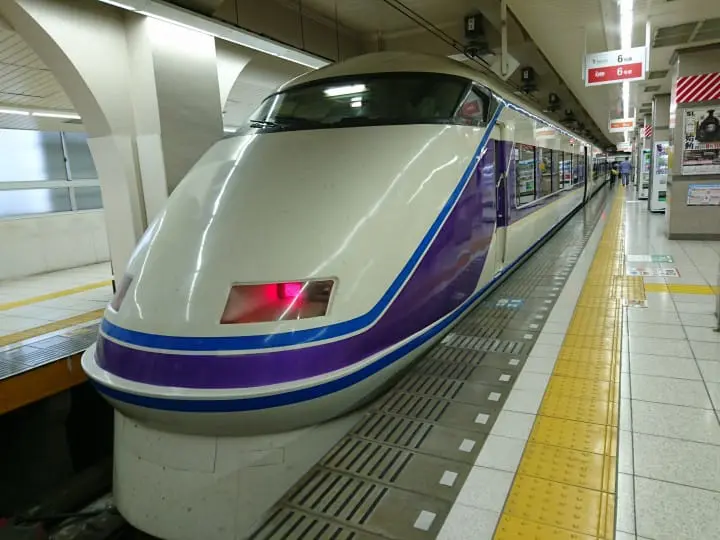
Heading to Tatebayashi and Isesaki? Tobu Railway’s limited express trains depart for those areas from Asakusa. The limited express will require an additional purchase for reserved seats.
Take the Joshin Electric Railway to Tomioka and Shimonita
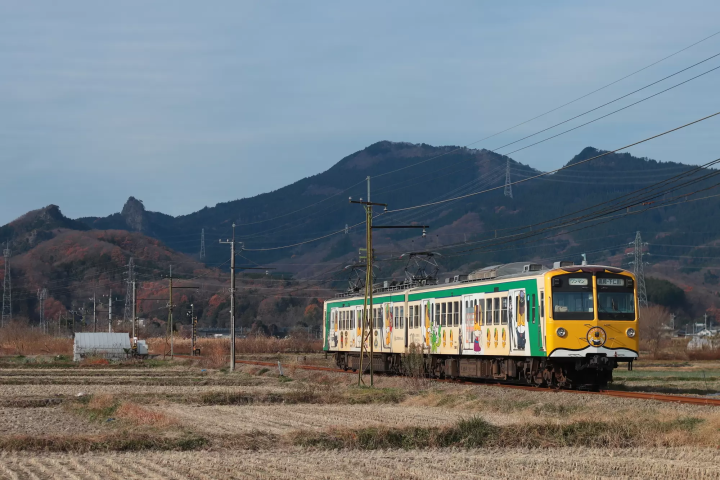
Picture courtesy of Pixta
You must transfer to the Joshin Electric Railway at Takasaki Station when traveling to Tomioka. Moreover, international visitors can take the Hokuriku Shinkansen or Joetsu Shinkansen to Takasaki by using the JR TOKYO Wide Pass. This also means you can ride the Joshin Electric Railway with the pass!
Express Bus

Picture courtesy of Pixta
You can also travel to various areas in Gunma by express bus from the Shinjuku Expressway Bus Terminal and Tokyo Yaesu Bus Terminal.
Gunma: Kanto’s Treasure Trove of Nature
Gunma Prefecture is where you can enjoy beautiful nature and wonderful hot springs, all while not being that far from Tokyo. If you’re an international visitor, then the JR TOKYO Wide Pass can be used on several routes in the prefecture.
Head to Gunma for your next trip!















































![[2026] Top 5 Strawberry Picking Spots in Tokushima, Naruto| Farms and Access Guide for January to May](https://resources.matcha-jp.com/resize/720x2000/2025/03/06-227165.webp)

